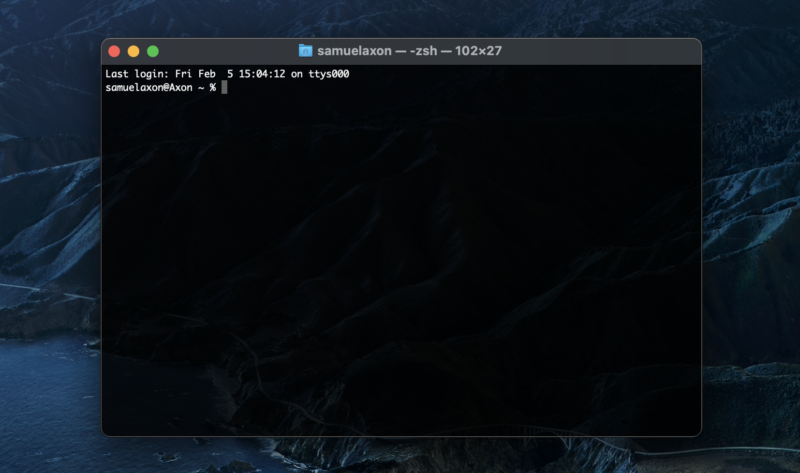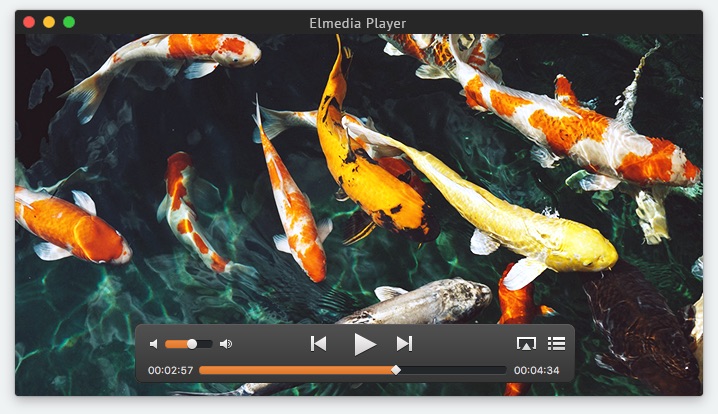Pros and Cons of Mac Os. Following are some of the Pros (Advantages) and Cons (Disadvantages) of Mac OS. Mac OS has a built-in program called BootCamp. It allows you to install windows, Linux or any other operating system in addition to OS X. Setting up the boot camp in OS X is also very easy. And switching between them is. Go to the Dock screen to switch off the animation for opening applications. For another tiny speed boost, use this menu to ensure the box next to Automatically hide and show the Dock is unchecked. MacOS (originally named 'Mac OS X' until 2012 and then 'OS X' until 2016) is the current Mac operating system that officially succeeded the classic Mac OS in 2001. Although the system was originally marketed as simply 'version 10' of Mac OS, it has a history that is largely independent of the classic Mac OS.

After a few years of use, even the best machines just don't run as smoothly or quickly as they used to. Luckily, a few tweaks under the hood can rev up the performance of your MacBook, iMac, or Mac Mini. (Not an Apple aficionado? Check out Popular Science'sguide to improving the performance of Windows machines.) These adjustments won't be immediately obvious, but they can give macOS a new spring in its step. Follow these steps to speed up your Mac machine like the experts do.
1. Tone down the visual effects
There's no doubt macOS is a gorgeous-looking operating system. But all those fancy animations and transparency effects take up resources that could be going towards actual applications. If you want to make sure your machine runs as lean and as mean as possible, you can turn these extra visual flourishes off. This trick is especially useful for those who tend to leave a lot of applications and windows open at one time.
Mac Os For Windows
To cut down on the extraneous eye candy, open up System Preferences from the Apple menu, then go to Accessibility and open up the Display Stuck? mac os. tab. Tick the boxes marked Reduce motion and Reduce transparency, which will leave you with a faster, albeit plainer, interface.
While you have System Preferences open, you can adjust more visual settings. Go to the Dock screen to switch off the animation for opening applications. For another tiny speed boost, use this menu to ensure the box next to Automatically hide and show the Dock is unchecked. This will lock it in place at the bottom of your desktop rather than having it constantly disappear and reappear. In the General tab, there's a similarly named option that will keep the menu bar in place.
Beyond System Preferences, you can adjust visuals with an application called TinkerTool. Free to download and use, it'll give you access to a few extra settings that the built-in app doesn't cover. For example, you'll be able to disable animation effects in Finder, and the fade-in and fade-out images in Launchpad. For more options, click through the various panes of TinkerTool and try turning some effects on and off.

After a few years of use, even the best machines just don't run as smoothly or quickly as they used to. Luckily, a few tweaks under the hood can rev up the performance of your MacBook, iMac, or Mac Mini. (Not an Apple aficionado? Check out Popular Science'sguide to improving the performance of Windows machines.) These adjustments won't be immediately obvious, but they can give macOS a new spring in its step. Follow these steps to speed up your Mac machine like the experts do.
1. Tone down the visual effects
There's no doubt macOS is a gorgeous-looking operating system. But all those fancy animations and transparency effects take up resources that could be going towards actual applications. If you want to make sure your machine runs as lean and as mean as possible, you can turn these extra visual flourishes off. This trick is especially useful for those who tend to leave a lot of applications and windows open at one time.
Mac Os For Windows
To cut down on the extraneous eye candy, open up System Preferences from the Apple menu, then go to Accessibility and open up the Display Stuck? mac os. tab. Tick the boxes marked Reduce motion and Reduce transparency, which will leave you with a faster, albeit plainer, interface.
While you have System Preferences open, you can adjust more visual settings. Go to the Dock screen to switch off the animation for opening applications. For another tiny speed boost, use this menu to ensure the box next to Automatically hide and show the Dock is unchecked. This will lock it in place at the bottom of your desktop rather than having it constantly disappear and reappear. In the General tab, there's a similarly named option that will keep the menu bar in place.
Beyond System Preferences, you can adjust visuals with an application called TinkerTool. Free to download and use, it'll give you access to a few extra settings that the built-in app doesn't cover. For example, you'll be able to disable animation effects in Finder, and the fade-in and fade-out images in Launchpad. For more options, click through the various panes of TinkerTool and try turning some effects on and off.
2. Check on system use
When your computer is crawling along, you need to figure out just what might be slowing it down. To find out where all your system resources are going, check out a hidden, but useful program called Activity Monitor. Vine and void mac os.
Open Spotlight with Ctrl+Space or by clicking on the magnifying glass in the menu bar. Then type 'Activity Monitor' into the box. Select the first suggestion that comes up in the list, and it will show you all the applications and background processes currently running on your Mac.
Within Activity Monitor, you'll see a barrage of constantly changing numbers and app names, but don't panic. These screens are actually pretty simple to navigate. The first tab, CPU, shows how much processing power each running program requires. (CPU stands for Central Processing Unit; this component acts as the brains of the computer and performs most of its calculations.) You'll see all open programs in the column on the left, along with the percentage of processor time they're currently taking up. The bottom of this tab will show you the overall CPU usage with a constantly updating graph.
Switch to the Memory tab, and you'll find similar readings, but this time for RAM. (A computer's RAM, or Random Access Memory, stores information.) Keep your eye on the Memory Used entry down at the bottom of your window—this shows how much RAM macOS is currently eating up. If it's somewhere near the maximum amount of RAM installed on your machine, that might explain any system slowdowns or crashes you've been experiencing.
Within Activity Monitor, you may encounter unfamiliar programs or processes. Click the little 'i' button for more information about what that application does. To stop it in its tracks, click the little 'x' button—just be sure you know what the process does first.
Once you're comfortable navigating within Activity Monitor, you can use this knowledge to improve your system's performance. First, identify the applications that are consuming more than their fair share of resources. If they don't really need to be open, you can shut them down. If you'd like to keep running one of the programs in question, open up its settings to see if you can get it to work more efficiently. For example, if one of your memory hogs is a browser, you might try disabling any extensions.
3. Free up hard drive storage
Your macOS machine relies on having a decent chunk of free hard disk space where it can store temporary files. It also needs this room because it will store information on the hard drive if it runs out of RAM. Without that space, when your laptop or desktop starts to run low on hard drive room, then you're probably going to notice an overall sluggishness in system performance.
Thankfully, macOS has some options to help you out. Open the Apple menu, choose About this Mac, and switch to the Storage tab to see which types of files are using up your disk space. To tidy them and free up some extra room, click on the Manage button.
Next to Store in iCloud, click Optimize and macOS will help you move some of your photos and videos to the cloud so you can delete the local copies. If you click Optimize next to Optimize Storage, on the other hand, macOS will hunt through your iTunes and Mail folders for files that can be safely deleted. For example, it might remove downloaded movies that you've already watched, because they're always available in the cloud anyway.
Next to the last entry, Reduce Clutter, click Review Files. The utility will suggest large files, downloads, and other pieces of data that you don't actually need to be storing. It's your call as to what you get rid of from here—use the cross icons to delete files. If you're not sure what the file contains, hit the magnifying glass icon to see it in Finder, where you can open it up and decide whether you have to hang on to it or not. Still unsure? You can always back up files somewhere else before deleting them.
4. Prevent programs from launching at startup
List Of Mac Os Versions
Many applications want to load at least part of themselves into memory as soon as macOS starts. This automatic launch gives them a head start over other programs and ensures they'll always be available to you. This can often be useful—something like Dropbox, for example, needs to be up and running all the time to keep your files synced up and ready. The problem strikes when too many software programs and utilities load themselves into memory, which makes the computer's startup last longer and limits the amount of CPU and RAM available for the applications you actually want to use. Taking more control over which programs launch at startup can claw back some of the performance you've lost.
Open System Preferences from the Apple menu, then click Users & Groups Dani gonzalez mac os. and select your account. Switch to the Login Items tab to see—and change—the programs that get to start automatically. The minus button removes entries and the add button lets you add programs to the list. If you don't recognize any of the applications, a quick web search should tell you what they are and why they want to launch with macOS.
But you're not actually deleting any programs from your system—you're just stopping them from starting automatically. If you need them later, you can always open them the normal way, and you can even add them back to the Login Items list. Ultimately, you'll need a bit of trial and error to work out the best balance between having your various applications and utilities always available, and having macOS boot up as quickly as possible.

